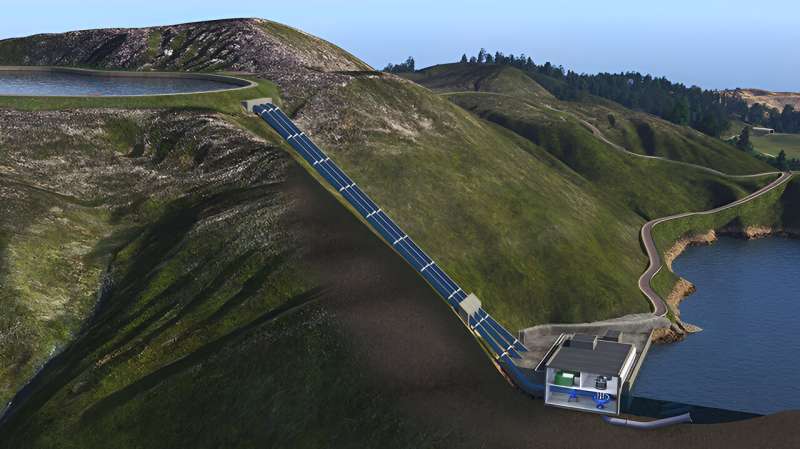The National Renewable Energy Laboratory (NREL) has developed a revolutionary tool that enables hydropower operators and developers to estimate the greenhouse gas emissions associated with building and operating closed-loop pumped storage hydropower (PSH) facilities. This innovative application is a game-changer in the clean energy transition, as it helps determine the optimal configurations for PSH to minimize emissions and support the integration of renewable energy sources like solar and wind into the grid.

Unlocking the Potential of Pumped Storage Hydropower
As the clean energy transition accelerates, the need for grid-scale energy storage has become increasingly critical. Pumped storage hydropower (PSH) is an established technology that accounts for the majority of today’s grid-scale energy storage. By moving water between an upper and lower reservoir, PSH generates and stores electricity, playing a vital role in balancing energy supply and demand.
However, the construction and operation of PSH facilities can have an impact on greenhouse gas emissions, due to factors such as the use of diesel-powered equipment, the production of concrete and steel, and the electricity mix powering the pump to move water to the upper reservoir. The NREL’s groundbreaking tool aims to address this challenge by providing a comprehensive assessment of the lifetime greenhouse gas emissions associated with PSH facilities.
Evaluating the Environmental Impact of PSH: NREL’s Innovative Approach
The NREL research team has developed the Pumped Storage Hydropower Life Cycle Assessment tool, a web-based, interactive application that allows PSH developers and interested parties to determine the greenhouse gas emissions of a PSH facility over its lifetime. This innovative tool utilizes the data and methods from a 2023 NREL study that compared the emissions of PSH to four other grid-storage technologies, including compressed-air energy storage, utility-scale lithium-ion batteries, utility-scale lead-acid batteries, and vanadium redox flow batteries.
The study found that PSH is the smallest emitter of greenhouse gases among these technologies, suggesting that it could play a key role in accommodating the integration of wind and solar generation while minimizing the environmental impact. The NREL’s Pumped Storage Hydropower Life Cycle Assessment tool empowers users to input specific details about a PSH facility, such as reservoir volume, dam materials, turbine capacity, and the length of the transmission line connecting the system to the grid. This allows users to compare different PSH scenarios side-by-side and understand the emissions associated with each component, material, and life-cycle phase.
Maximizing the Climate Benefits of Pumped Storage Hydropower
The ultimate goal of the NREL’s Pumped Storage Hydropower Life Cycle Assessment tool is to help users determine the sites, specifications, and configurations that minimize greenhouse gas emissions, enabling PSH to contribute to overall emissions reductions and support the clean energy transition as cleanly as possible.
By providing this valuable resource, the NREL is empowering hydropower operators and developers to make informed decisions that prioritize the environmental impact of PSH facilities. This tool not only helps identify the most eco-friendly PSH options but also serves as a crucial step in ensuring that the clean energy transition is as sustainable as possible. As the world continues to embrace renewable energy sources, the NREL’s innovative approach to evaluating the greenhouse gas emissions of PSH is a significant advancement in the fight against climate change.
